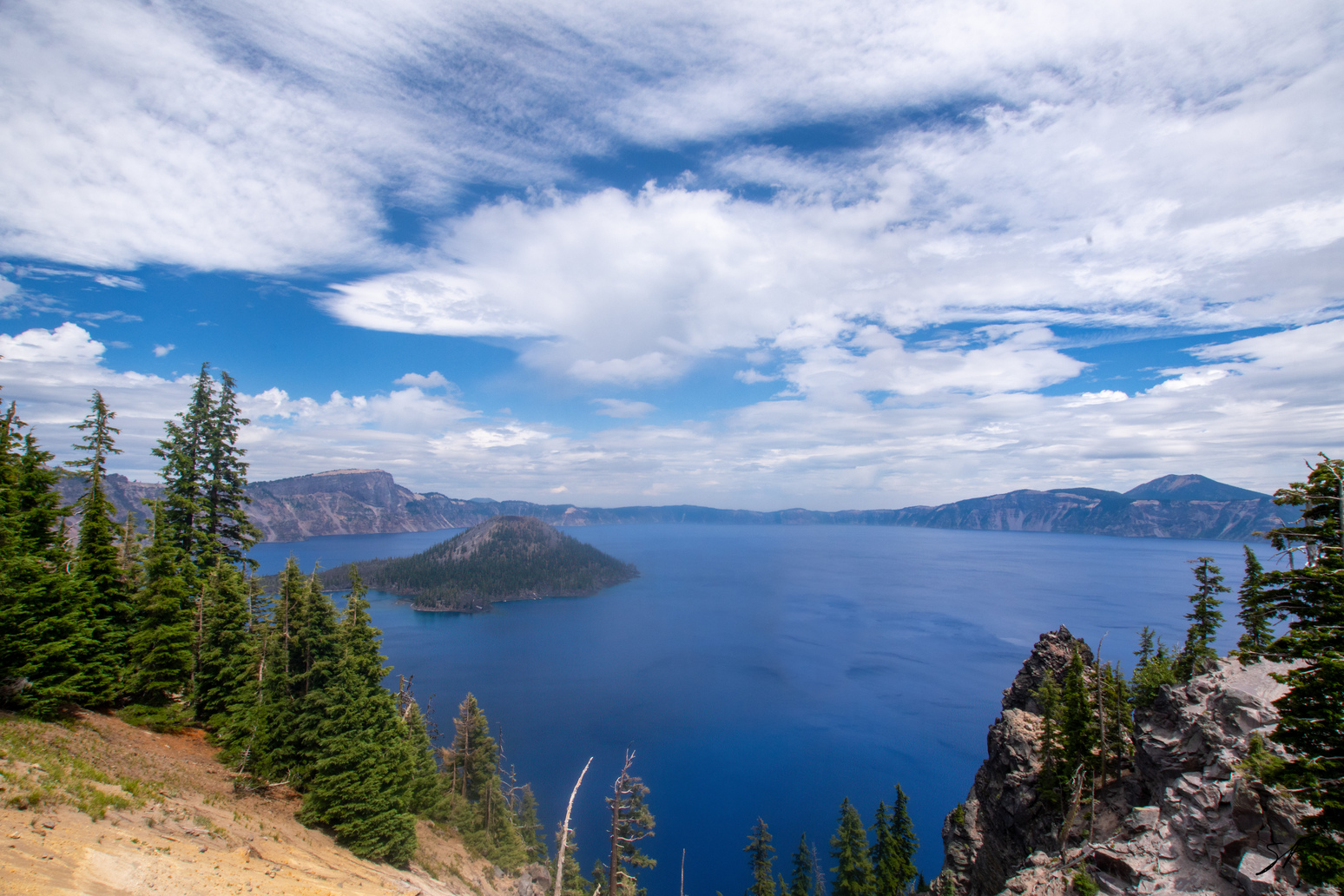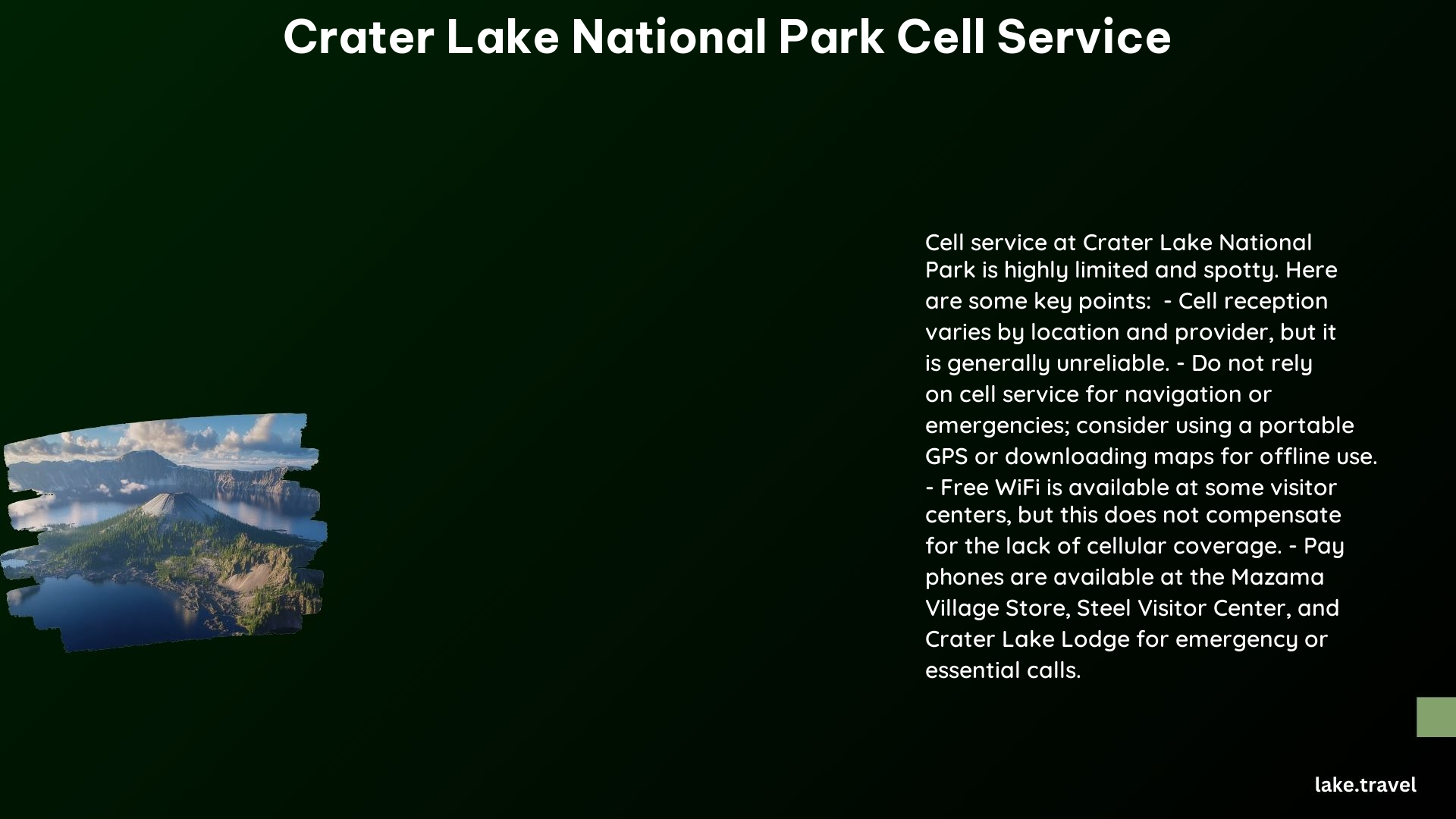Cell service at Crater Lake National Park is limited and unreliable due to the park’s remote location and rugged terrain. Only about 69.2% of the park area has some form of wireless coverage, primarily around main facilities and roads. Visitors should expect spotty reception, with better coverage near Rim Village and Mazama Village. T-Mobile offers the best coverage, followed by Verizon, AT&T, and US Cellular. This guide provides detailed information on cell service availability, carrier performance, and tips for staying connected in the park.
What is the Overall Cell Coverage Like in Crater Lake National Park?

The cell coverage in Crater Lake National Park is best described as patchy and inconsistent. Here’s a breakdown of the overall coverage:
- Approximately 69.2% of the park area has some form of wireless service
- Coverage is concentrated around main facilities and roads
- Remote areas and hiking trails often have little to no service
- Quality of reception varies significantly depending on location
To give you a clearer picture, here’s a table summarizing the coverage by major carriers:
| Carrier | Coverage Area | Data Speed | Notes |
|---|---|---|---|
| T-Mobile | 62.54% | Best 5G coverage | Mostly in northern parts |
| Verizon | 65.18% | Moderate | Patchy in some areas |
| AT&T | Limited | Slower | Less extensive coverage |
| US Cellular | Limited | Slower | Less extensive coverage |
Where Can Visitors Find the Most Reliable Cell Service in the Park?

While cell service is generally limited, there are certain areas where visitors are more likely to find a reliable connection:
- Rim Village
- Better overall coverage
-
Home to the Rim Village Visitor Center
-
Mazama Village
- Improved coverage, especially during summer months
-
More facilities open during peak season
-
Steel Visitor Center
- Reliable cell service
-
Pay phones available as a backup
-
Main roads and developed areas
- Generally better coverage compared to remote locations
It’s important to note that even in these areas, service can be inconsistent and may vary depending on your carrier and specific location within the area.
What Are the Major Dead Zones for Cell Service in Crater Lake National Park?
Visitors should be aware of several areas where cell service is particularly unreliable or non-existent:
- Rim Drive
- Much of this scenic route has little to no cell service
-
Be prepared for extended periods without connectivity
-
Hiking Trails
- Most trails, especially those leading away from developed areas, have poor to no cell coverage
-
Plan accordingly and carry alternative communication devices if necessary
-
Southern Areas of the Park
- Generally slower and less reliable mobile data speeds
-
Coverage can be spotty and inconsistent
-
Remote Viewpoints and Scenic Spots
- Many of the park’s most beautiful locations are also the least connected
- Don’t rely on cell service for navigation or emergencies in these areas
How Does Cell Service Vary by Carrier at Crater Lake National Park?
The quality and extent of cell service can vary significantly depending on your mobile carrier. Here’s a more detailed look at each major carrier’s performance in the park:
T-Mobile
- Best overall coverage and speed
- Covers up to 62.54% of the area with 5G service
- Strongest in the northern parts of the park
- Still may experience dead zones in remote areas
Verizon Wireless
- Covers about 65.18% of homes in the area with mobile data
- Coverage can be patchy and less reliable in many parts of the park
- Generally good performance near main facilities
AT&T Wireless
- Less extensive coverage compared to T-Mobile and Verizon
- Slower data speeds in many areas
- May struggle in more remote parts of the park
US Cellular
- Limited coverage within the park
- Slower data speeds compared to other carriers
- May be suitable for basic communication in some areas
What Should Visitors Do to Prepare for Limited Cell Service?
Given the limited and unreliable nature of cell service in Crater Lake National Park, visitors should take several precautions:
- Download offline maps
-
Use apps like Google Maps or AllTrails to download park maps for offline use
-
Inform others of your plans
-
Let someone know your itinerary and expected return time
-
Carry alternative communication devices
-
Consider bringing a satellite phone or personal locator beacon for emergencies
-
Bring a physical map and compass
-
Don’t rely solely on digital navigation
-
Check in at visitor centers
-
Get up-to-date information on conditions and any alerts
-
Charge devices fully before entering the park
- Bring portable chargers or car chargers as backups
Are There Any Alternatives to Cell Service for Communication in the Park?
While cell service is limited, there are alternative communication options available:
- Pay Phones
- Located at main visitor centers and some campgrounds
-
Useful for making calls when cell service is unavailable
-
Wi-Fi Hotspots
- Available at select locations, such as the Crater Lake Lodge
-
May require purchase or have time limits
-
Park Radio
-
Tune in to park radio stations for important announcements and information
-
Emergency Call Boxes
- Located at strategic points throughout the park
-
Use in case of emergencies when other communication methods fail
-
Ranger Stations
- Visit for in-person assistance and communication needs
How Does Limited Cell Service Impact Emergency Situations in the Park?
The limited cell service at Crater Lake National Park can have significant implications for emergency situations:
- Delayed response times: Inability to quickly contact emergency services
- Navigation challenges: Difficulty in providing accurate location information
- Limited access to real-time information: Weather updates or changing conditions may not be readily available
- Increased reliance on self-sufficiency: Visitors must be prepared to handle minor emergencies on their own
To mitigate these risks:
- Carry a first aid kit and know how to use it
- Be aware of the nearest ranger station or emergency call box locations
- Consider carrying a personal locator beacon for remote areas
- Always inform someone of your plans before venturing into areas with no cell service
What Are the Future Plans for Improving Cell Service in Crater Lake National Park?
While there are no specific announced plans for improving cell service in Crater Lake National Park, the National Park Service is generally working on enhancing connectivity in parks nationwide. However, any improvements must balance the need for communication with preserving the natural environment and wilderness experience.
Potential future developments may include:
- Expansion of existing cell towers’ coverage
- Installation of small cell sites in key areas
- Improved Wi-Fi access at visitor centers and lodges
- Implementation of emergency communication systems that don’t rely on traditional cell networks
Visitors should continue to plan for limited cell service in the foreseeable future and take necessary precautions when exploring the park.
